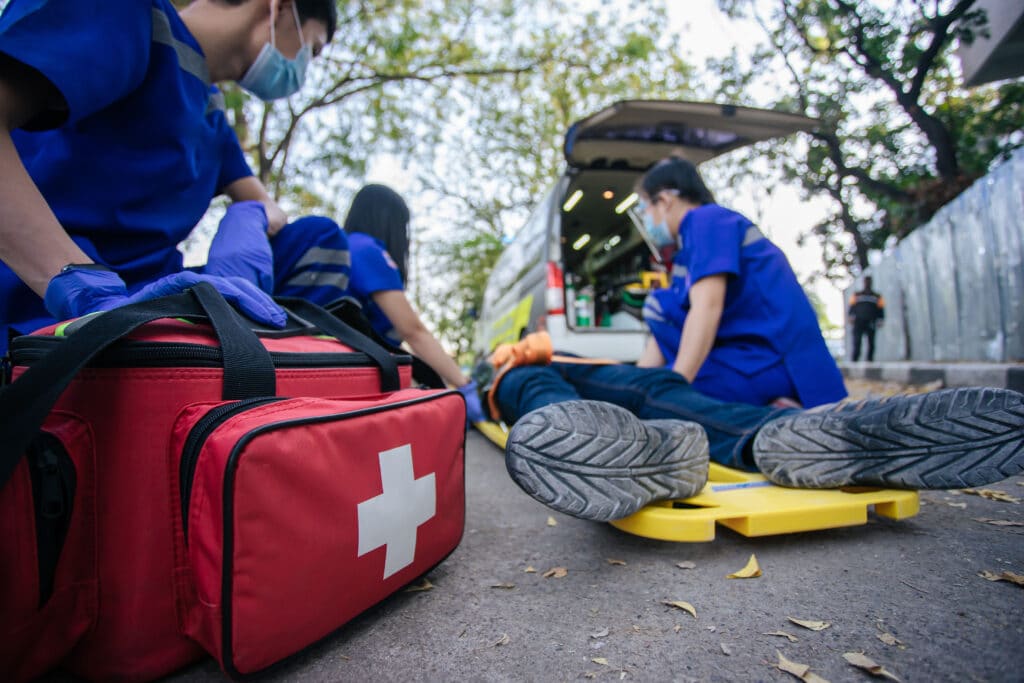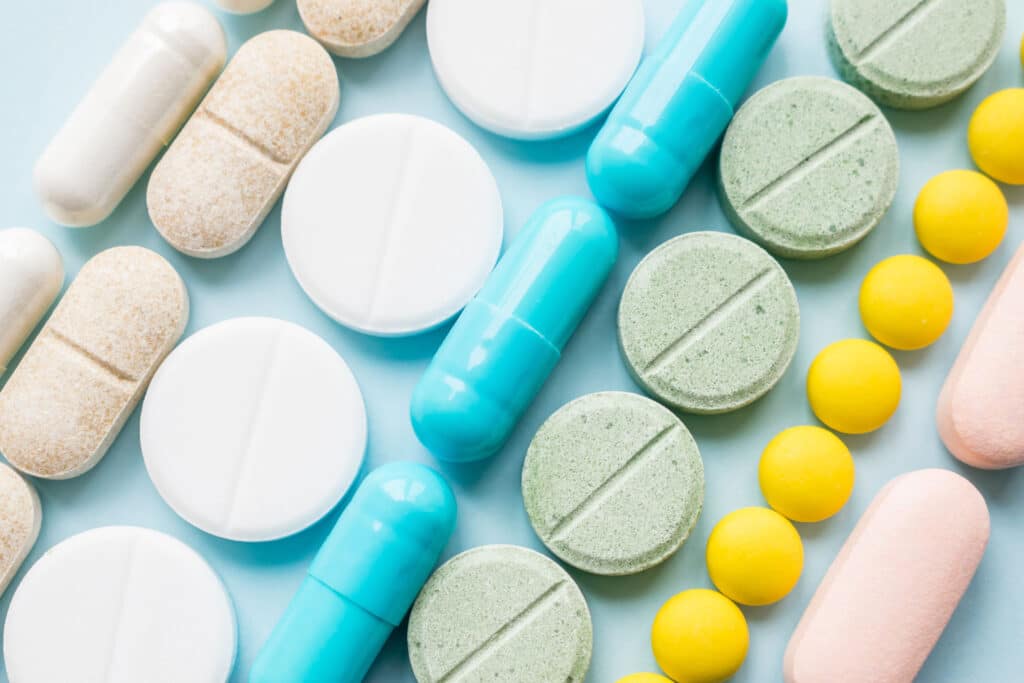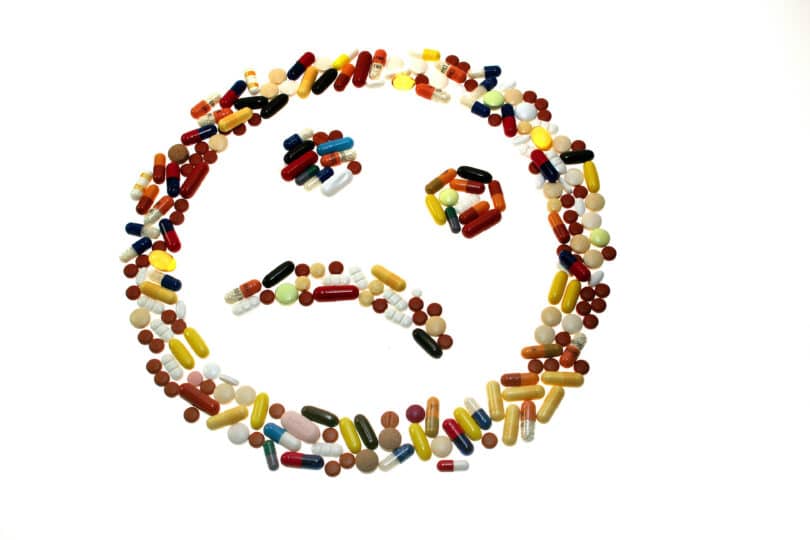The numbers from the last few years are not encouraging. It seems these days people are dropping left and right, and the main culprit is doctor prescribed medication. Recent data released by the US government shows an increase – though minor – in overdose deaths for 2022. Read on for more info.
Overdose deaths 2022
2022 is now the highest recorded year for overdose deaths in the US, taking the place of the preceding year. Provisional data released by the CDC on Wednesday, May 17th, put the number for 2022 overdose deaths at 109,680. These are not final numbers however. For example, 2021 provisional data put the number at 107,622 deaths. That number rose to 109,179 by the time final numbers came out. Final numbers for 2022 are likely to be a bit higher than what just came out. Either way, still an increase from the previous year.
The most troubling factor in this, is that over 2/3 of these deaths, are attributable to synthetic opioids. Opioids are based on compounds from the opium plant, but are not naturally occurring, and are instead made in a lab. Whereas synthetic versions of weaker opiates (compounds found in the plant) are also given as medication – like codeine; the bigger issue is with the stronger, synthetic offerings. This entire classing of drugs is lab-created, and this whole issue stems not from a black market growing, but from doctors prescribing these medications.
The drug with the biggest share of the death toll? Fentanyl. Its estimated that of 2022 numbers, more than 75,000 of the total 109,680 are attributable to synthetic opioids, with fentanyl leading the way. Fentanyl is strong in its own right, but is often mixed with other drugs, either purposefully, or accidentally; which leads to many deaths. Other drugs that played a big role in 2022 overdose death numbers, are psychostimulants, like meth and coke; which together made up over a quarter of the deaths.

The White House’s Director of the Office of National Drug Control Policy, Dr. Rahul Gupta, had this to say in a statement about the current drug crisis and what the government is doing about it: “We’ve expanded treatment to millions of Americans, we’re improving access to Naloxone to reverse overdoses, and we’re attacking the illicit fentanyl supply chain at every choke point.”
Of course the bigger issue, which was 100% ignored in the White House statement, is that these are doctor prescribed medications. The whole reason this is an issue at all, is because doctors were acting as dealers…and still are. Whatever other actions might be taken, that point must be remembered. The opioid issue is massively different from other drug issues, in that these drugs are legally prescribed, and their legal prescription is not only what started this mess, but remains ongoing.
Previous years death overdose numbers
On the plus side (however much you can use that term), overdose deaths stayed relatively level from 2021-2022. 109,179 in 2021 is not terribly far from the overdose death number of 2022 – 109,680. Just a rise of a few hundred; although final numbers could put the 2022 number several thousand higher in the end. For now, the numbers indicate that things remained generally consistent, with only a minor increase; but considering an increase is still an increase – it also shows nothing was done to help the problem.
The final number for 2021 overdose deaths – 109,179, was 15%+ higher than 2020, which had approximately 93,000 overdose deaths. That number is a 30% increase from 2019 overdose death numbers, which totaled about ~70,630 deaths. This means just between the years 2019 and 2022, yearly overdose deaths increased by about 40,000 deaths. 2018 numbers weren’t much lower than 2019, with 67,367 overdose deaths that year.
In one of the only instances of a temporary change in trajectory, the 2018 numbers are a 4.1% decline from the previous year’s numbers. In 2017 there were 70,237 overdose deaths, which is almost on par with 2019; making 2018 numbers a temporary dip. Unfortunately, the trajectory did not change overall, and the numbers since increased. Weirdly enough, after that 2018 dip, numbers went up at a much faster rate than they did before. Kind of like the quiet before a storm.
The main issue with synthetic opioids started in the first decade of the century, although it didn’t pick up steam in a grand way until after 2010. Weaker opiate medications have been around for awhile, going back to the late 1800’s. It says a lot about these newer and stronger synthetics, that despite the fact we’ve had access to similar medications for over 100 years, it was only with their entrance that the overdose rate skyrocketed.

Even heroin has been around since the turn of last century, first as an actual medication. And whereas heroin used to represent the worst talking point for overdose deaths; related overdose numbers have stayed at relatively even levels in the last 20+ years. The main increase is in synthetic opioids only. You can see it all very clearly in graphs here.
Issues with White House statement
Obviously, upon information of this nature coming out, the White House must say something. The government has done nothing to stop the legal production of these drugs, which makes it a part of the problem automatically. The government made no bones about illegalizing Quaaludes back in the early 1980’s, despite also saying that they were highly addictive; so it stands to reason that caring about the addictive nature of opioids is not what keeps them legal. For the record, Quaaludes had a negligible death toll, especially compared to opioids.
Black markets exist for drugs that are both legal and not legal. For this particular issue, what set it off was the creation and sale of synthetic opioids. Meaning this is a pharmaceutical company and government-created issue. Given that, it stands out to me that the White House statement says this: “Most of these deaths were caused by illicit synthetic drugs like clandestinely manufactured fentanyl and methamphetamine, often in combination with other drugs including cocaine, heroin, and xylazine.”
Maybe this is true. Maybe most of the deaths are from the black market now, but plenty are not. And it could be that the majority are not. These are doctor prescribed medications. Whatever illicit market there is, is only relevant because of the legal market. The drugs were created by the legal market, NOT the black market. It seems the White House wants readers to associate this entire issue with the black market, and not as a government-regulated problem.
Gupta goes on to say this: “The historic actions taken by the Biden-Harris Administration are saving lives. We’ve expanded treatment to millions of Americans, we’re improving access to Naloxone to reverse overdoses, and we’re attacking the illicit fentanyl supply chain at every choke point. As a result, around 19,000 people are still alive and can be there at the dinner table, at birthdays, and at life’s most important moments.”
Once again, the White House really wants you to focus on the illicit market, not the one it promotes legally. Attacking the illicit supply chain? Why not simply not allow doctors to prescribe the medications? Why not stop their legal production and sale? If you read this without knowing anything about the issue, you’d probably not guess these are legal medications.

Even funnier still, is that having done nothing to help the problem, the government then takes credit for saving 19,000 lives. I expect the point Gupta is trying to make, is that the use of Naloxone reversed that many overdoses; but it certainly doesn’t mean that that many people were saved. It means a particular overdose was treated for a person. Not only is the government taking credit, it’s calling this a ‘historic action.’
Gupta goes on, “President Biden has called on us to double down on our efforts to save even more lives so we can beat this crisis, and that’s exactly what we’re doing.” But what does that mean? Even more Naloxone? Is his argument that a drug put out to counteract overdoses, will stop an entire addiction crisis for drugs still wildly available, even legally? Does pumping an alcoholic’s stomach, make them not an alcoholic anymore? Its like, the government is offering nothing, yet trying to take credit for an only small rise in deaths. And ignoring that a rise automatically means nothing improved.
He goes on to talk about seizures of illegal product, seemingly to put attention on the illegal market again. Yet, in not one place does he talk of changing regulation to limit legal production or prescribing. According to the statement, government actions are solely for increasing Naloxone use, and seizures of illicit drugs.
And it continues to ignore the most useful possibility out there: swapping ketamine for opioids. This actual solution is never mentioned at all by any government; which is painfully weird if the idea is to help people. Not only does ketamine show as a more useful pain treatment, and one that can last months after application; but without the addictive properties of opioids. Of course, not mentioning it does go in line with helping pharma companies make money from opioid sales.
Conclusion
Does this leveling off mean that some action is working, and the problem will reverse? Likely, no. Because no suitable actions have been taken. Maybe the problem won’t get worse, and we’ve reached the standard leveling off point. Or maybe this is just a break in the overall trajectory, which will continue up next year. One thing for sure (or pretty sure) is that real change takes real action. Right now, the government isn’t even being honest about where the problem is coming from. So can we really expect it to do anything useful about it?
Welcome readers! We’re happy you found us at Cannadelics.com; where we put our energy into bringing you the best in independent reporting for the cannabis and hallucinogen industries. Head our way daily to keep in-the-know; and subscribe to the Cannadelics Weekly Newsletter, for all direct updates and awesome product promos.







